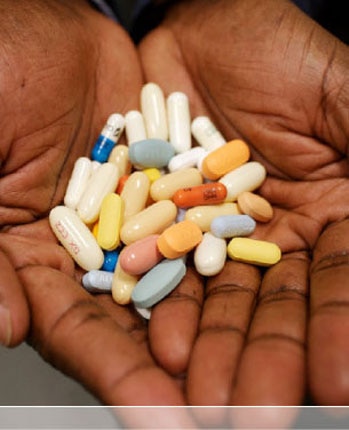Adapting to Change (1996–2000)
In December 1995, encouraging clinical trial results moved the FDA to quickly approve a new drug to be used in combination with others. That drug was called saquinivir, the world’s first protease inhibitor.
The age of highly active antiretroviral therapy, or HAART, had arrived, and the CARE Act community swung into action. AIDS training curricula were modified to include information about the new combination therapy. People living with HIV/AIDS were educated about the powerful “drug cocktail.” Funding was increased to purchase treatment. And those steps were just the beginning.
In the meantime, however, another crisis was looming. The prevalence of AIDS was rising dramatically in African-American and Latino communities. In response, HRSA and its partners redesigned programs to meet minority needs. Minority staff were recruited to increase cultural competency, and Minority AIDS Initiative funds were used to build capacity to distribute services.
By the end of the decade, AIDS morbidity and mortality had fallen among minorities, but not as much as among Whites. The challenge of ensuring treatment equality for minorities still existed, just as it does today. It is a challenge that the Ryan White HIV/AIDS Program still embraces.
 Health Resources & Services Administration
Health Resources & Services Administration


